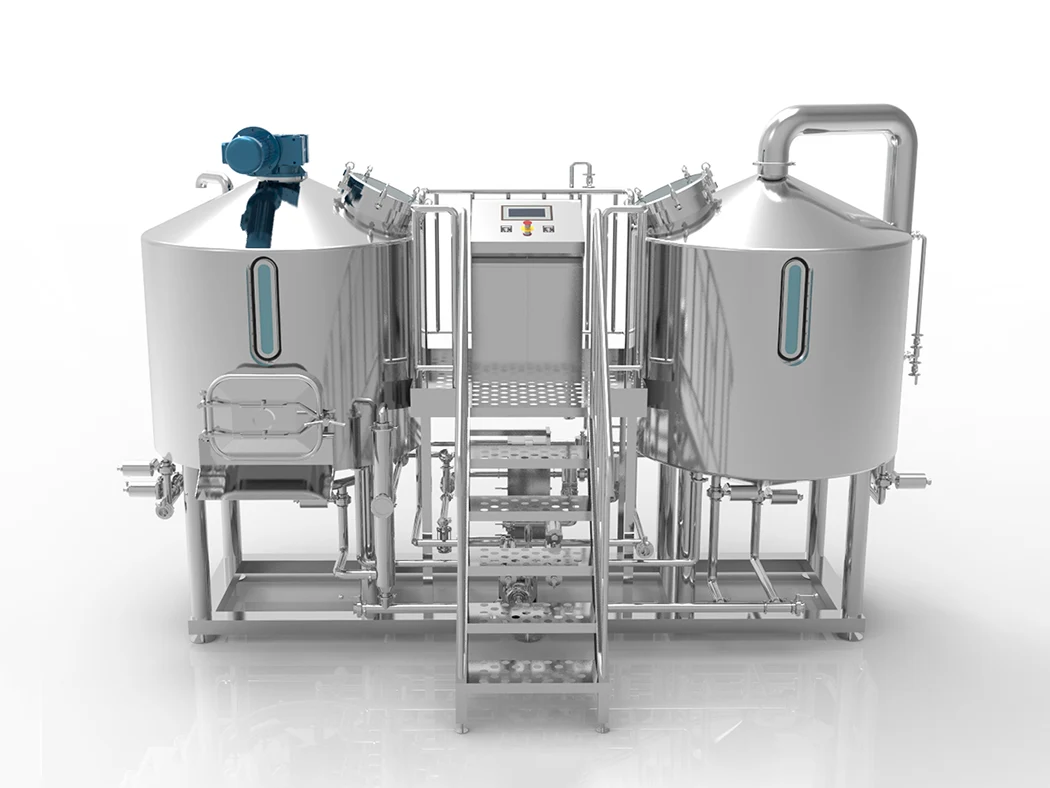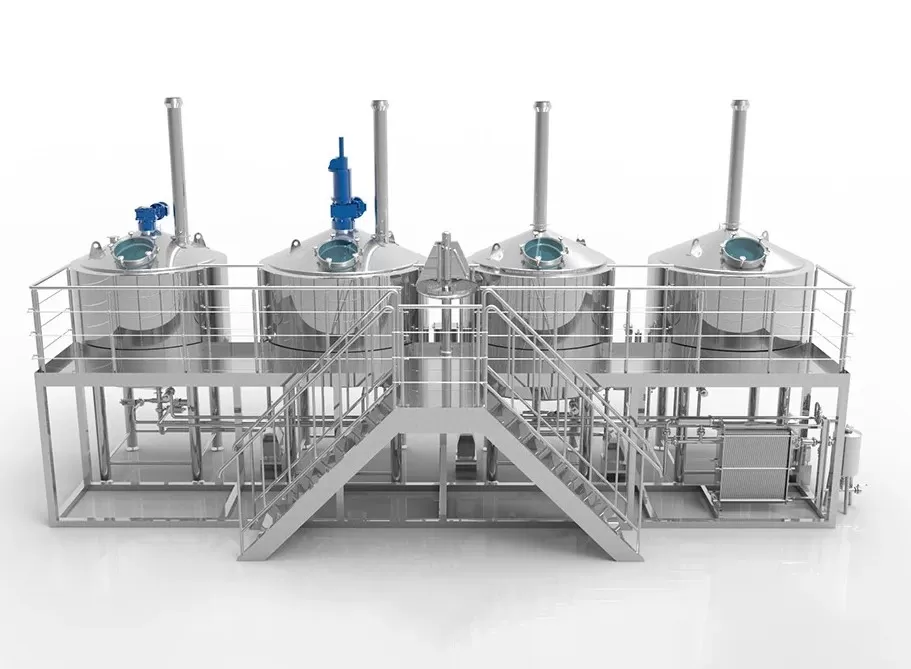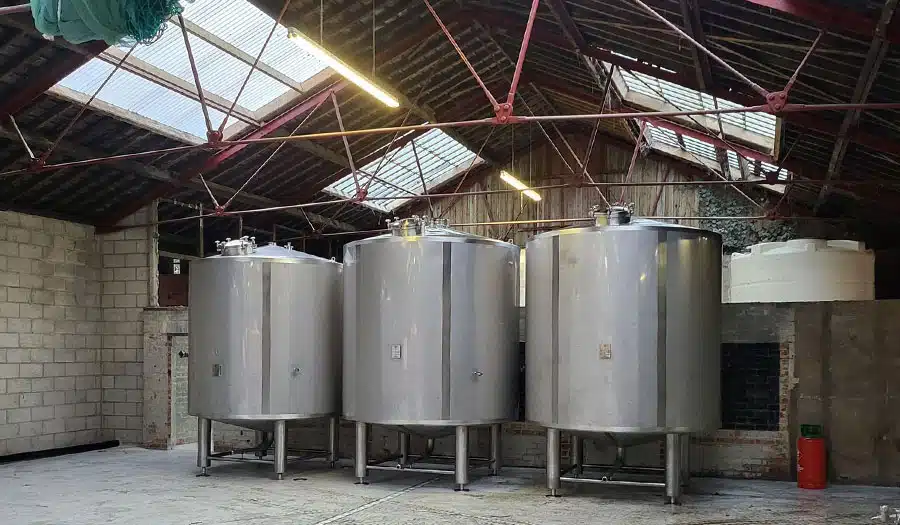ステンレス製貯蔵タンク は、その強い耐食性、良好なシール性能、安定した構造、および長い耐用年数のために、食品、化学、製薬、環境保護、および他の産業で広く使用されています。業界によって、ステンレス鋼貯蔵タンクに対する需要は異なる。例えば、食品業界では衛生基準が重視され、化学業界では耐食性が重視されます。したがって、企業は合理的に適切なステンレス鋼貯蔵タンクを選択することが重要です。本稿では、食品業界のステンレス貯蔵タンクを中心に、各業界におけるステンレス貯蔵タンクの需要を詳しく紹介し、その重要性と選択方法を探る。
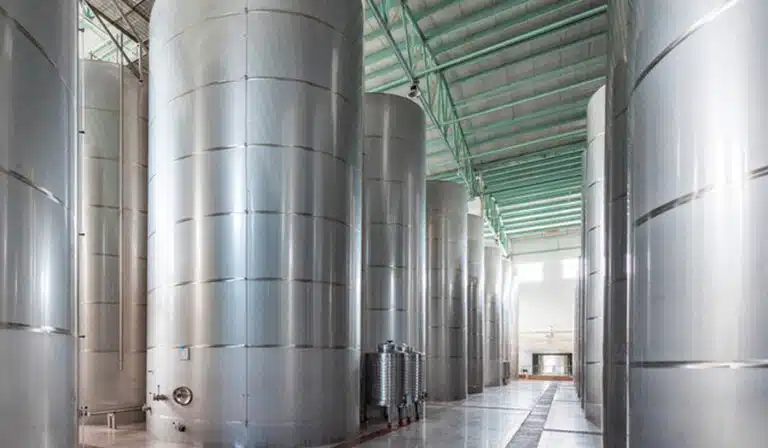
ステンレス鋼貯蔵タンクの重要性
材料の安全性を確保する。
ステンレス貯蔵タンクは、高品質のステンレス鋼材料(304、316Lなど)で作られており、タンク内の材料が汚染されたり、化学反応したりするのを効果的に防止し、材料の純度を確保することができます。特に食品、薬品、その他の産業に適しています。
保管効率の向上
従来のプラスチックタンクや炭素鋼タンクと比較して、 ステンレス鋼貯蔵タンク は、より高い強度と耐久性を備えている。さまざまな液体や粉体を長期間保存できるだけでなく、高温、低温、高圧の環境下でも安定的に作動するため、生産効率が向上する。
耐用年数の延長とメンテナンスコストの削減
ステンレス製貯蔵タンクは耐食性が強く、通常の貯蔵タンクよりも耐用年数がはるかに長いため、交換やメンテナンスのコストを削減することができます。
業界標準および規制要件を満たす。
食品、製薬、その他の業界では、貯蔵機器の衛生に対する要求が非常に高くなっています。ステンレス製貯蔵タンクは、製品の安全性を確保するため、GMP(適正製造規範)などの関連業界基準に準拠しています。
食品産業におけるステンレススチール製貯蔵タンクの需要
食品業界では、貯蔵タンクに対する要求が非常に厳しい。食品の衛生と安全を確保するだけでなく、HACCP(危害分析重要管理点)、GMPなど、食品業界の関連法規を遵守しなければならない。食品業界では主に、牛乳、ジュース、醤油、アルコール、調味料などの液体または固形の食品を保管するために使用される。
- 304ステンレス鋼:耐食性に優れ、牛乳、飲料、精製水など、ほとんどの食品貯蔵に適しています。
- 316Lステンレス鋼:モリブデン元素を含み、耐食性が強く、ジュース、アルコール、発酵食品などの酸性、アルカリ性食品や高温加工食品に適しています。
食品産業におけるステンレス鋼貯蔵タンクの構造的特徴
- 内側と外側の研磨:食品残留物を防ぎ、洗浄と殺菌が容易で、食品衛生基準に適合する。
- 優れた密閉性:空気や微生物の侵入を防ぐ無菌設計を採用し、食品の劣化を防ぐ。
- 攪拌装置付き(オプション):乳製品、醤油、ジュースなど、均一に攪拌する必要がある食品に適している。
- 断熱層設計(オプション):牛乳やチョコレートなど、一定の温度で保存する必要がある食品に適しています。
食品業界におけるステンレス製貯蔵タンクの一般的な用途
- 酪農業:新鮮な牛乳、ヨーグルト、クリームなどを保管するために使用され、無菌環境を必要とする。
- 飲料産業:ジュース、炭酸飲料、精製水、茶飲料などの貯蔵
- ワイン醸造業:ビール、ワイン、酒類などの発酵と貯蔵
- 調味料産業:醤油、酢、食用油などの調味料の保管。
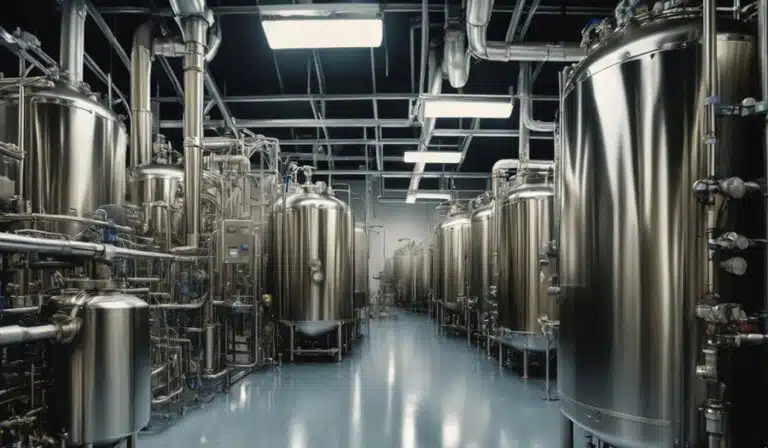
化学業界のステンレス鋼貯蔵タンクへの需要
化学工業で貯蔵される物質は通常腐食性があるため、貯蔵タンクの耐食性は比較的高い。
- 304ステンレス鋼: 一部の溶剤や一般的な化学液体など、腐食性の低い化学薬品に適しています。
- 316Lステンレス鋼:強酸や強アルカリに耐性があり、硝酸や硫酸のような腐食性の高い化学物質の保管に適している。
化学産業における貯蔵タンクの特殊設計
- 防錆コーティング:強酸や強アルカリを貯蔵する場合、タンクの耐久性を向上させるために防錆コーティングを追加することができます。
- 耐高温・耐圧設計:一部の化学薬品は高温または高圧環境下で貯蔵する必要があり、貯蔵タンクはそれに対応する耐圧性を持つ必要がある。
製薬業界におけるステンレス製貯蔵タンクの需要
製薬業界では、ステンレス製貯蔵タンクの清浄度に対する要求が非常に高く、通常はGMP基準に準拠する必要があります。316Lステンレス鋼は、優れた耐食性と無菌特性を持ち、製薬業界で好まれる材料です。
製薬業界における貯蔵タンクの特別要件
- 無菌設計:タンクの無菌性を確保するために、CIP(定置洗浄)システムとSIP(定置滅菌)システムが必要である。
- 鏡面研磨:薬剤の残留を防ぎ、二次汚染を避ける。
- 正確な温度制御:バイオ医薬品、ワクチン保管などに最適。
環境保護産業のステンレス鋼貯蔵タンクへの需要
The environmental protection industry is mainly used to store sewage, waste liquid, etc., requiring storage tanks to have strong corrosion resistance and sealing performance. 316L or higher grade stainless steel to ensure acid and alkali corrosion resistance.
- Strong sealing performance: prevent harmful gas leakage and protect the environment.
- Strong weather resistance: adapt to outdoor storage needs, wind and rain resistance, UV resistance.
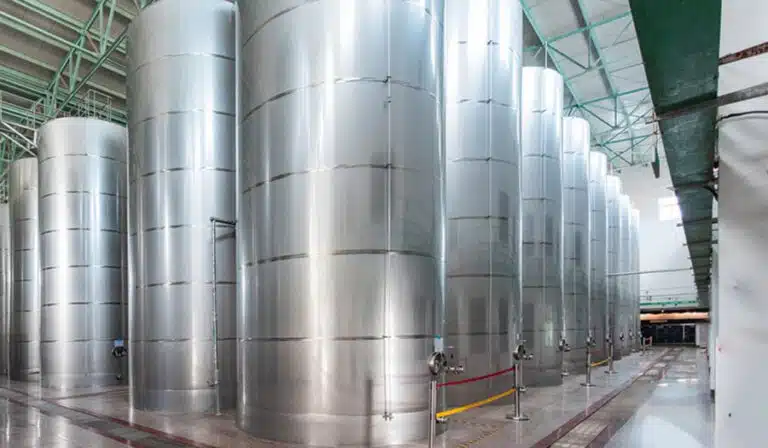
ステンレス製貯蔵タンクの選び方
保管材料の性質に応じて材料を選択する。
Different stainless steel materials are suitable for different material storage needs. The food and pharmaceutical industries usually choose 304 or 316L stainless steel to ensure hygiene, safety, and corrosion resistance. The chemical industry requires materials with higher corrosion resistance, such as 316L or duplex stainless steel, to adapt to the storage of corrosive substances such as strong acids and alkalis. The environmental protection industry needs to combine the complexity of the storage medium, choose materials with stronger corrosion resistance, or add anti-corrosion coatings in the tank. The right material selection can effectively extend the service life of the storage tank while ensuring the stability of the stored materials.
貯蔵の必要性に応じてタンク構造を選択する。
The structural design of the storage tank directly affects the use effect and storage efficiency. Depending on the storage volume, small, medium, or large storage tanks can be selected to meet different production scale requirements. Some materials need to be evenly stirred, and a tank with a stirring device can be selected; if a specific temperature needs to be maintained, a storage tank with insulation or cooling function should be selected. For materials that need to be stored under high pressure or vacuum conditions, the pressure resistance design of the tank is also crucial. Reasonable structural design can not only improve the use efficiency of the storage tank but also reduce energy consumption and maintenance costs.
貯蔵タンクの安全性能に注意を払う。
The safety performance of stainless steel storage tanks is related to the stability of enterprise production and personnel safety. Storage tanks must have good sealing performance to prevent external contamination or internal material leakage. For storage tanks that store volatile or flammable and explosive substances, an explosion-proof design is required to ensure safe operation under extreme conditions. The pressure resistance and impact resistance of the tank are also key factors affecting safety, especially in the chemical and pharmaceutical industries. The stability of storage tanks under high temperatures and high-pressure conditions is particularly important. In addition, enterprises should regularly inspect and maintain storage tanks to ensure their long-term safe operation.
貯蔵タンクが業界基準を満たしていることを確認する。
Different industries have strict standards and specifications for stainless steel storage tanks. The food industry needs to comply with food safety standards such as HACCP and GMP to ensure that the tank is hygienic and pollution-free. Storage tanks in the pharmaceutical industry should meet the Good Manufacturing Practice (GMP) for pharmaceuticals and have an aseptic design. Storage tanks in the chemical industry need to comply with chemical safety standards and pass corrosion resistance tests. The environmental protection industry requires storage tanks to have good sealing to prevent the leakage of harmful substances. Choosing stainless steel storage tanks that meet industry standards can ensure product quality and avoid production being affected by substandard equipment.
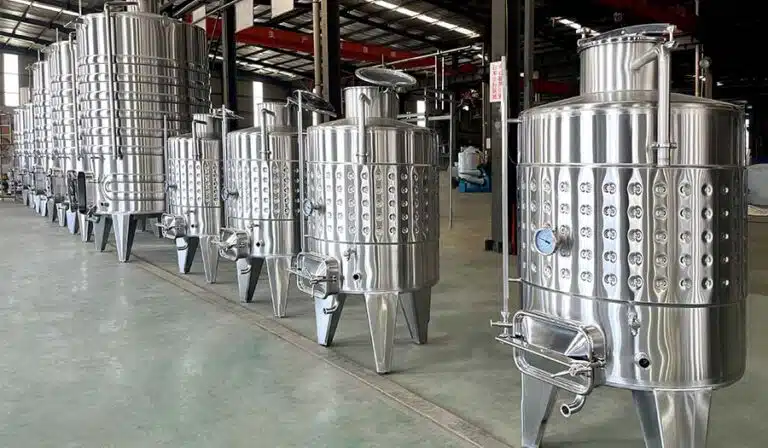
適切なサプライヤーを選ぶ。
High-quality stainless steel storage tank suppliers can provide products that meet industry standards and guarantee long-term and stable after-sales service. When choosing a supplier, manufacturers with ISO, CE, and other certifications should be given priority to ensure reliable product quality. In addition, the supplier’s production process, delivery capabilities, installation services, and after-sales maintenance capabilities are also important considerations. Enterprises should give priority to suppliers with rich industry experience and good customer reviews to ensure that the purchased stainless steel storage tanks can operate stably for a long time and reduce maintenance costs.
Cost evaluation combined with the company's budget
When choosing a stainless steel storage tank, in addition to considering quality and performance, it is also necessary to make a reasonable evaluation combined with the company’s budget. 304 stainless steel storage tanks are relatively cheap and suitable for most food and general chemical applications, while 316L stainless steel is more expensive, but it has stronger corrosion resistance and is suitable for high-demand industries. Storage tanks with special structures, such as equipment with stirring, heating, or cooling functions, will have increased costs. Choosing the most cost-effective storage tank within the budget can not only ensure production needs but also control the company’s equipment investment costs.
貯蔵タンクのメンテナンスと清掃に注意する。
Regular maintenance and cleaning of stainless steel storage tanks can help extend the life of the equipment and maintain the safety of stored materials. Storage tanks in the food and pharmaceutical industries need to have an easy-to-clean design and support CIP (cleaning in place) or SIP (sterilization in place) systems to ensure a sterile environment. Storage tanks in the chemical and environmental protection industries need to regularly check the corrosion resistance of the tank body to prevent metal fatigue or corrosion damage caused by long-term use. Choosing easy-to-maintain and easy-to-clean storage tanks can reduce operating costs and improve production efficiency.
結論
Stainless steel storage tanks are widely used in many industries such as food, chemical, pharmaceutical, and environmental protection. Different industries have different requirements for the material, structure, safety, and standards of storage tanks. Therefore, when choosing stainless steel storage tanks, companies need to comprehensively consider the characteristics of the stored materials, tank structure, industry standards, safety performance, supplier qualifications, and long-term maintenance costs. Reasonable selection of stainless steel storage tanks can not only improve production efficiency and ensure material safety but also reduce equipment maintenance costs and meet industry regulations. Companies should choose the most suitable storage tanks based on their own industry needs, combined with product quality, functional configuration, and budget to ensure the safe and stable operation of the production process.

